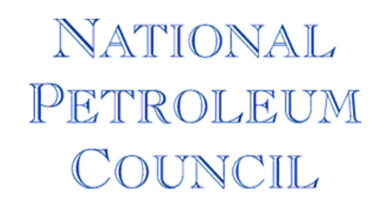Talent management, borderless careers among industry tactics for personnel development
By Linda Hsieh, managing editor
From managing talent to managing generational gaps to offering “borderless” careers, companies in the oil and gas industry are tackling the personnel shortage with out-of-the-box thinking and initiatives aimed at developing and keeping competent workers. Speaking during a panel session on “Managing the Big Crew Change” at the 2011 IADC Critical Issues Asia Pacific Conference last week in Kuala Lumpur, representatives from National Oilwell Varco (NOV), Petronas Carigali and Schlumberger convened to discuss methods of employee recruitment and development each company is undertaking. They were joined on the panel by a deputy vice chancellor from the University of Technology Petronas (UTP), as well as 10 UTP students invited to the conference by IADC.

Bas van Opdorp, regional business development manager for NOV Fluid Control-Brandt, focused his discussion on a talent management program that allows NOV to focus its training and development dollars on the employees who are most likely to be future leaders. The process starts with an interview of the managers so they can rate employees in the categories of performance, potential and development readiness.
On performance, the manager rates each employee’s ability to consistently deliver results over time, with focus on the individual’s sustained performance. Potential is defined as the employee’s ability to respond to diverse, intense and/or varied assignments under different conditions – a quality akin to learning agility. Finally, development readiness assesses whether the employee is ready to take on additional responsibilities within his current job function.
The assessment results in a talent matrix where employees are placed into categories such as “high professional” (someone with high performance but low potential), “consistent star” (high performance and high potential), or “diamond in the rough” (high potential but low performance).
For employees who have been assessed as low or inconsistent performers, the company can then work to ensure that performance plans are created and corrective actions are taken, Mr van Opdorp said. On the flip side, for those identified as high-potential talent who will likely be future leaders of the company, there should be creation of specific corporate-driven development opportunities. “These are the guys we’re fast-tracking,” he explained.
Approximately 19,000 of NOV’s 40,000-plus employees have gone through this assessment so far, helping the company to develop and retain employees and place them into key roles with the right training. “It’s definitely not a one-size-fits-all program. You have to customize what you do with each employee based on certain characteristics,” Mr van Opdorp said.
Raiha Azni binti Abdul Rahman, Petronas head human resources management and capability, noted that 65% of the company’s workforce in the E&P segment have been there for less than five years. Gen-X and Gen-Y workers together make up about 83% of Petronas’ workforce, she said, translating into an overall very young staff.
With demographics like these, it only makes sense for the company’s employee development program to consider how it will manage the expectations of different generations, Mrs Rahman said. At Petronas, Gen-Y workers have been asked to form a young professionals club to facilitate communication with management. Other steps taken to appeal to younger workers include providing avenues for after-hours activities such as sports and recreation, flexible work hours and a casual work dress policy.
Mrs Rahman noted that another shift in the workforce demographics is under way – along the gender line. With 60% to 70% of students at Malaysian universities now being female, it’s expected that soon these women will be joining and reshaping the local talent pool. “There will be a different scenario in the future where we have to accommodate more females coming in and working in more male-dominated professional jobs,” Mrs Rahman said.
Highlighting the concept of “managing the supply chain of talents,” Schlumberger HR manager for the Far East geomarket Rheza Rahim explained that recruitment is a critical step because companies need the right “raw material” to work with in order to produce top employees or future leaders. “The first thing about this is that you want to select from the widest available pool of talent that you have,” he said. This means having a dedicated recruiting network and good relations with universities so the company can identify and recruit top graduates.
In the training and development phase, Schlumberger is working to reduce the time it takes to turn a fresh graduate into a self-sufficient employee – a period that Mr Rahim estimates at six to seven years at the best companies. “With Schlumberger, we aim to do that in three to four years,” he said.
Shortening this time to employee autonomy has involved the use of simulation in purpose-built training centers, which give trainees simulated field experience. “We can simulate the whole environment in our training center. We don’t need to worry about, can they get on the rig? Is there availability? … It can simulate pretty accurately the whole rig environment without them ever having to leave the training center,” he said. This shortens the initial training period from a period of nine to 12 months to approximately four to six months.
Schlumberger also offers opportunities for “borderless” careers in their effort to recruit and retain talent, which means the employee can go anywhere within the company – no borders or boundaries in function (R&D, QHSE, finance, etc), business (segments, new acquisitions, etc) or geography. “From the company perspective, we get employees who are well-rounded and have a good, multifaceted view of the company. … For the employee it could be very motivational to know that they have multidimensional career opportunities in the same company,” Mr Rahim said.
The final panelist of the session was Mohamed Noor Rosli Bin Baharom, deputy vice chancellor for student affairs and alumni at UTP. As a private university wholly owned by Petronas, the school places great importance on industry engagement, Mr Baharom said. In curriculum development, for example, educators and industry representatives worked together to create a curriculum that satisfies both academic and industry needs.
Internship placement is another area where industry is actively engaged with UTP, and Mr Baharom said he believes the real-world experience students get through internships often prove to be invaluable parts of their overall learning experience.
UTP also works to ensure their graduates are well-rounded rather than just technically competent. In particular, two key attributes that industry often looks for are effective communication skills and problem-solving skills, Mr Baharom said. “We also put a lot of emphasis on business acumen,” he added.
Under the advisement of Petronas, UTP is planning to roll out an MBA program in energy management by May 2012, in addition to the degrees currently offered, such as mechanical engineering, petroleum engineering and chemical engineering. Under the proposed MBA program, a specialization in energy management would include the study of the energy value chain, energy management, energy technology and innovation, sustainability and low carbon energy, and energy law and policy.




